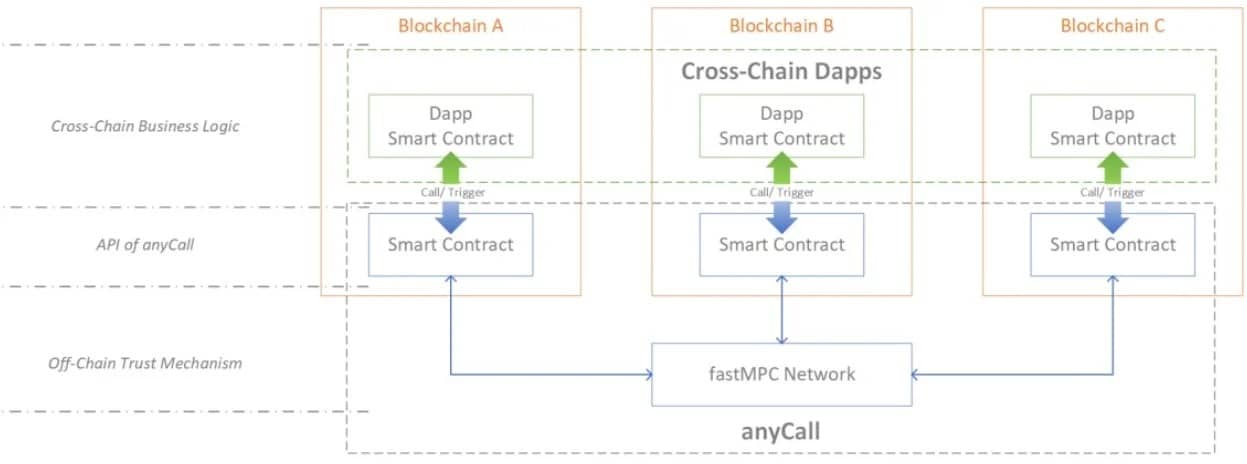In line with its vision of an interoperable future, cryptocurrency bridge Multichain has presented the white paper of an innovation called anyCall. This will push the limits of information transfer between the different blockchains of the ecosystem.
Multichain presents its anyCall technology
Last week, the Multichain protocol (MULTI) unveiled the white paper of its anyCall technology. This technology is intended to enable communication between blockchains at a much higher level than is currently the case.
️anyCall Whitepaper released ➡️ https://t.co/6PC427P8TM
Here you can see
– Why we developed anyCall – A Generic Cross-Chain Message Protocol
– It’s design and advantages
– It’s possible use cases
– It’s mission and vision, making Multichain the ultimate router in Web3⛓️ https://t.co/pISp8l46pj pic.twitter.com/KPCCIUTIne– Multichain (Previously Anyswap) (@MultichainOrg) August 12, 2022
In its presentation, Multichain looks back at the history of our ecosystem, starting with Bitcoin (BTC), which only allowed for peer-to-peer value exchange. Then came the programmable ecosystems, with Ethereum (ETH) at the forefront, and the emergence of new smart contract blockchains, sometimes competing, sometimes complementary.
In order to enable interactions between the various networks, bridges such as Multichain, formerly known as Anyswap, had to be developed.
The problem with the protocol is that if an application wishes to develop on several blockchains, it must clone itself. This process has the drawback of splitting liquidity by creating new versions of an application for each target network.
This is not really multi-chain development, but a splitting of efficiency across several closed environments. But the promise of anyCall is to break down these walls.
Inter-channel messaging
To give a simple explanation: Multichain’s anyCall allows you to call on information contained on blockchain A, while being on blockchain B.
In concrete terms, the Curve protocol uses anyCall to unify the rewards it distributes in CRV via its “gauge” system. In short, this system makes it possible, thanks to a voting principle, to redirect the distribution of CRVs to one pool of liquidity rather than another. Thus, the teams of a project whose token is present on Curve will seek to have as many votes as possible in their gauge in order to receive the most CRVs possible.
The same gauge can therefore be present on several networks, for example Ethereum, Fantom (FTM) and Polygon (MATIC). Without anyCall, there would be a disparity between the blockchains, as the votes in the gauges cannot be uniform across the three networks at the same time. Well, in this case, anyCall is able to collect all the data across all the ecosystems at the same time, allowing for a fair distribution of CRVs to investors.
To provide this, anyCall relies on an off-chain network called fastMPC. To put it in layman’s terms, this can be seen as a kind of enhanced oracle, having an overview of all applications connected to anyCall, regardless of the blockchain:

Architecture of anyCall
The diagram above illustrates how applications deployed on different networks can communicate via the anyCall API system. In the future, fastMPC Network is to be deployed on a blockchain and be fully open to decentralisation.
According to its white paper, anyCall could therefore go even further than Polkadot’s DOT or Cosmos’ ATOM. Indeed, any application connected to anyCall could, a priori, communicate with the others, which pushes the boundaries of interconnection a little further.
